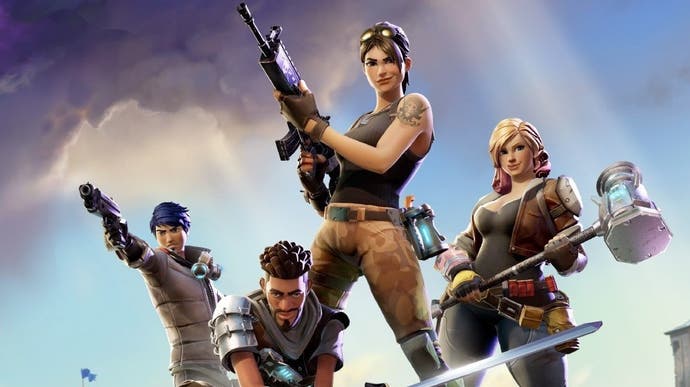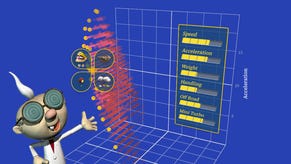It turns out playing Fortnite at 30fps puts you at a disadvantage
What's the frequency, Kevin?
It may not just be your bad luck. Playing Fortnite at 30 frames per second - on Nintendo Switch or a lower-spec PC - puts you at a genuine competitive disadvantage. It turns out a bug in Epic's code currently causes a slower rate of gunfire at 30fps, compared to playing at 60fps or higher. In other words, 30fps players deal less damage per second than those running at higher frame-rates.
An ongoing Reddit thread highlights the issue. It's understood to be a quirk of Unreal Engine 4, the tech on which Fortnite is built, and can significantly affect gameplay right now. Based on patch V.7.20 (CL 4727874), I can confirm it affects both PC and Switch users, having tested it on several different machines, including Switch. That's a concern given Nintendo's portable really has no option to go beyond 30fps.
We contacted Epic for comment, and it seems the studio is already on top of it. "We're aware of this issue and are investigating a fix," an Epic spokesperson confirmed. "We'll update players as soon as we have more information."
So what's going on? I raised my Digital Foundry magnifying glass to put some numbers on the issue. For a bite-size example of the problem, check out the video in the tweet above. I have a PC (equipped with an original Nvidia Titan) on low settings, in order to lock at frame-rates including 300fps, 60fps and 30fps. Using the game's Playground mode for some privacy, I placed six metal walls in a line, and with a basic assault rifle, held fire - auto-reloading as I went - until the last wall at the back shattered.
The result? 30fps does indeed lag behind. It crumbled the final wall in 27.52 seconds, compared to 26.08 seconds while running at 60fps. That's a 1.44 second difference, or put another way, a 5.24 per cent speed advantage for the 60fps player overall. A second, repeat test puts this figure even higher - at 6.45 per cent - proving there is a variance between tests. All told though, the average player may not notice right away, but for professional play, it's a significant and repeatable advantage.
Out of curiosity I tried this at 300fps as well. The result comes in at 26.06 seconds, but based on my tests at least, that's barely any difference next to PC at 60fps - margin of error stuff really. When it comes to your rate of fire, the two are ostensibly identical. Even so, according to the Reddit thread, other weapons potentially can show different results at rates higher than 60fps. For our assault rifle at least though, it's good news for those playing on PlayStation 4 or Xbox one machines, which are both broadly 60fps experiences. Sadly, there's no alternative for Switch, fixed as it is at 30fps, and clearly affected by the issue.
There is some logic to why this is happening. The running theory is that a gun's rate of fire is linked to the way frames are output by a PC or console. This way, each bullet syncs to a new frame as it's fired. However, in cases where a gun's rate of fire is too high - with an automatic rifle, for example - a 30fps machine will delay the release of a bullet by a millisecond to match it. It's a tiny delay, but those milliseconds stack up over the course of emptying a large clip, creating a larger difference.
All of which means a 1v1 encounter between a 30fps player and a 60fps player can, in theory, give the latter an edge. Supposing they're armed with the same weapon, a 60fps player simply deals out damage faster over an extended period. The issue has history in PlayerUnknown's Battlegrounds too - another battle royale built on Unreal Engine 4 - with long-standing reports of bullet sprays being slower, and less afflicted by recoil at lower frame-rates. It's a familiar issue then, and one that appears to be tied to the engine itself.
With any luck this bug will see a patch soon, and we'll report back when it hits. For now, if you're thinking of taking the Switch version online for serious, competitive play, it's perhaps best to hold fire.










